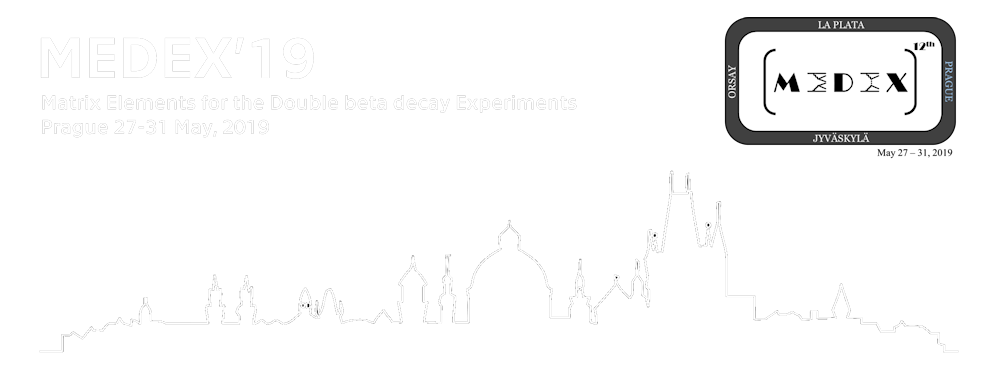Speaker
Mr
Joel Kostensalo
(University of Jyväskylä)
Description
The reactor antineutrino and gallium anomalies have been long unexplained. Possible explanations for both of these anomalies include new physics, such as the existence of one or more eV-scale sterile neutrino [1]. However, the previous theoretical calculations, which do not replicate the experimental results, rely on many simplifying approximations [2,3].
In the reactor-antineutrino analysis the beta decays contributing to the cumulative electron spectrum are usually assumed to have allowed spectral shapes. However, many of these decays are actually first-forbidden. Moreover, these decays dominate the experimentally observable region. In some cases, like in the case of the ground-state-to-ground-state decay of 140Cs (see figure), this is found to be a rather poor approximation. Based on the recent results, the use of this allowed approximation can at least partially explain the so called reactor antineurtino anomaly.
Our new large-scale shell model calculations regarding the neutrinonucleus scattering cross section of 71Ga shows no statistical difference to the experimental results of GALLEX and SAGE experiments. Conflict between charge-exchange BGTs and the neutrino-nucleus cross sections can to some extent be explained by destructive interference between Gamow-Teller and tensor contributions.
![Electron spectrum of $^{140}\rm Cs$ for $g_{\rm A}=0.8-1.2$.][1]
References
[1] S. Gariazzo, C. Giunti, M. Laveder, Y. F. Li, and E. M. Zavanin, J. Phys. G: Nucl. Part. Phys. 43, 033001 (2015).
[2] J. N. Bahcall Phys. Rev. C **56**, 3391 (1997).
[3] L. Hayen, J. Kostensalo, N. Severijns, and J. Suhonen Phys. Rev. C **99**, 031301(R) (2019).
[1]: https://drive.google.com/open?id=1nkCRlqoX6Qz0OhionWd9jVZPLvi_TsqD

